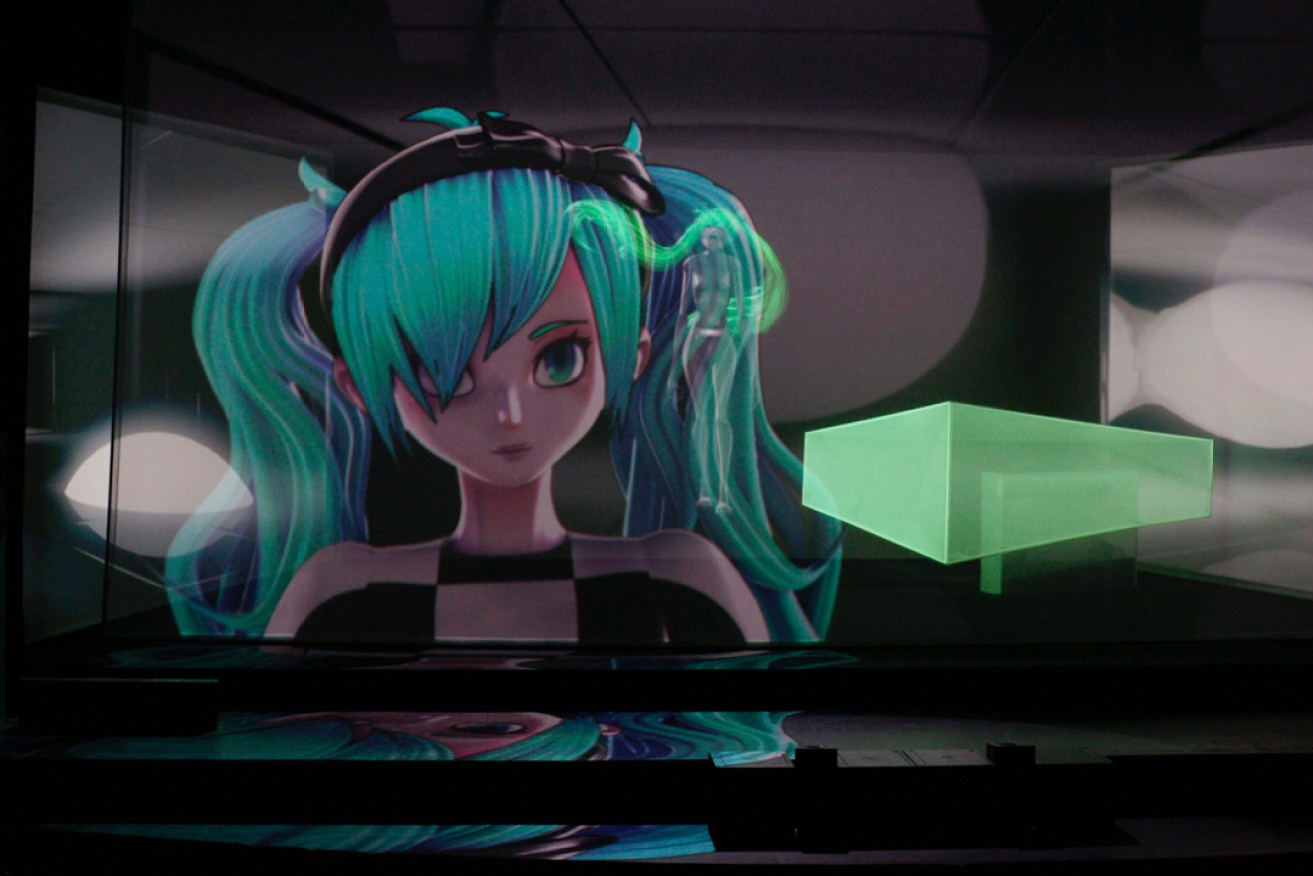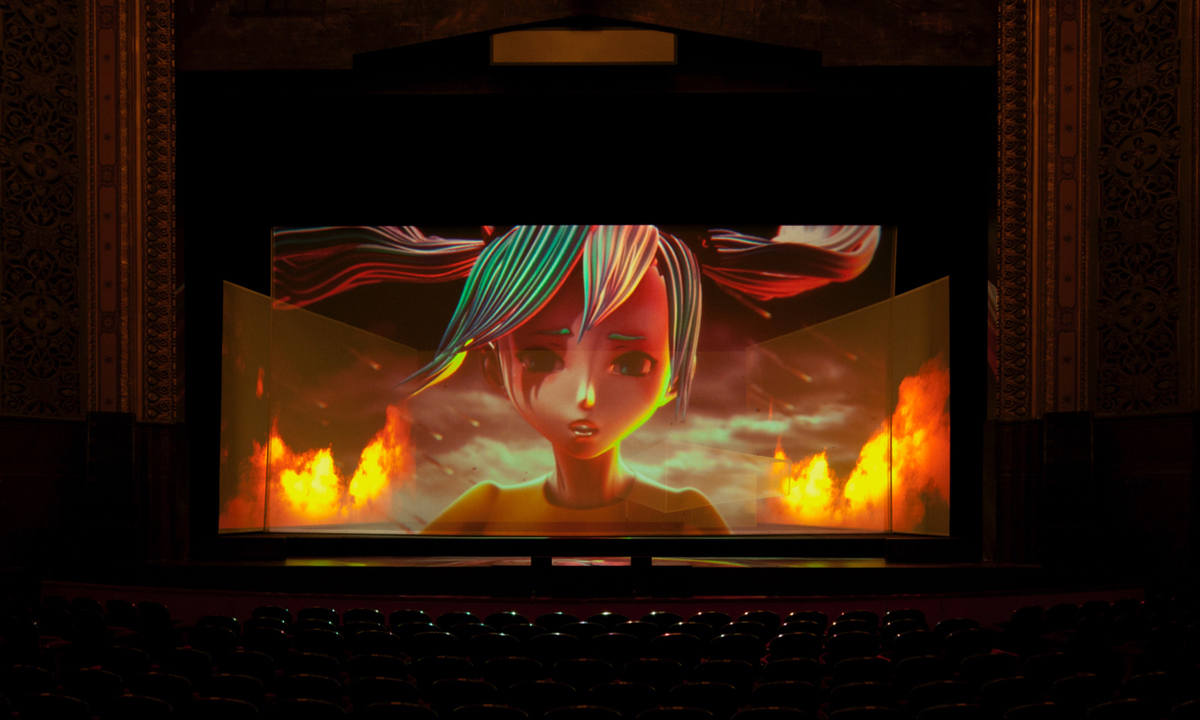OzAsia review: Vocaloid opera The End
Ever been swallowed by a holographic pop star?


Hatsune Miku in The End. Photo: Kenshu Shintsubo
Following an overture of melodic strings and glitch, the Dunstan Playhouse curtain raises to reveal a “room” consisting of four screens.
Things take shape in the light. As fractured beams distort then reveal the action, a cartoon mouse and a 16-year-old humanoid girl with turquoise pigtails meet to interrogate the meaning of life. There’s a lot to digest and it’s equal parts engrossing and overwhelming.
This mind-blowing multimedia spectacle is the creation of Keiichiro Shibuya. ATAK, Shibuya’s music label, releases electronic music by artists from across the globe. Shibuya is also a pianist, composer, DJ and massive fan of Japanese pop phenomenon Hatsune Miku.
Miku, an animated singing star, makes her Australian debut during this year’s OzAsia festival in The End — an opera without humans. She might be a virtual performer but there’s no shortage of real-life audience for her talents. The pop icon pulls stadium-sized crowds in China, Taiwan and Hong Kong, and in Japan she’s a household name with a huge social media following.

Miku (a creation of Japanese company Crypton Future Media) sings using synthesised vocals based on samples originally taken from Saki Fujita, a voice actress.
In an interview with InDaily earlier this year, Shibuya talked about the year he spent composing The End in collaboration with a vocaloid programmer (Pinocchio-P), a visual artist (YKBX) and a spatial sound designer (Evala).
The End is based on the composer’s own experience after the loss of his wife through suicide led him to question his understanding of life and death. In the opera, Miku struggles with her own identity as she compares her humanoid self with the real human experience of death.
Her analysis leaves plenty of space for individual insight, explained Shibuya.
“The composition of the opera is fragmentary and goes on like a dream. These unique and mysterious effects give room for each audience to have possibilities to interpret the work as they want.”
When Miku’s everyday life is challenged by a visit from a stranger, she ventures through shifting landscapes in search of answers. Cast into the depths of self-reflection, she wonders: “Who is this ‘I’?”
We’re plunged into a glorious riot of sound and colour as we follow her, engulfed by the astonishing visuals and Shibuya’s emotion-charged score.
If you’re up for an evening of sensory overload (be ready for optical trickery, loud music, smoke and strobe effects), then this show is the one for you. The End is a lush, immersive flight into the future.
The final performance of The End takes place at the Dunstan Playhouse tonight (in English and Japanese with subtitles). Read more OzAsia interviews and reviews here.




